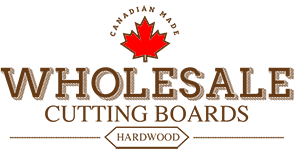Blog
Are Your Cutting Boards Actually Safe? Here’s the Real Story Behind Ours
Cutting boards. You use ’em every day, right? They get tossed around, covered in tomato guts, maybe never even dry out properly. But here’s the kicker—most folks never stop to think about what’s actually in their board. I mean, sure, they all look kinda the same, but trust me, not every cutting board deserves a spot in your kitchen.
A lot of the cheap ones? Total nightmares. Full of sketchy glues and who-knows-what chemicals.
Here’s Where We’re Different
At Wholesale AP, food safety isn’t just some boring label we slap on the box. We’re borderline obsessive. We use non-toxic, food-safe stuff only—like Titebond III Ultimate Wood Glue. Not exactly a sexy name, but hey, it’s top-tier and actually certified for food contact (yes, really). This is why our boards won’t poison your stir-fry.
What Actually Makes a Board Food-Safe?
Look, it’s not rocket science, but there’s more to it than you think. A board’s gotta nail three things:
1. Pure, Non-Toxic Stuff
- No mystery stains or weird dyes. No plastic-y coatings that sneak into your salad.
- Just solid, food-grade hardwoods or good-quality plastics. That’s it.
2. Bacteria-Fighting Surface
- Needs to be dense and not super porous. Otherwise, you’re just giving germs a new home.
3. Safe Glues & Construction
- All adhesives (like our FDA-approved Titebond III) have to be food-safe. If it’s got formaldehyde? Its a Hard pass.
If a board can’t do these things, it’s basically a ticking time bomb for your kitchen. And yeah, most cheap boards cut corners with nasty glues or resins that break down and make things even worse. Ours? Nope.
Why Titebond III? Because Most Glue Is Kinda Sus
You’d be surprised how many wood glues are loaded with stuff you wouldn’t want within 100 feet of your food. Formaldehyde, sketchy additives, all that jazz. That’s why we’re loyal to Titebond III. Here’s the deal:
- FDA approved for indirect food contact (aka, it won’t ruin your dinner).
- Waterproof and non-toxic—so go ahead, chop those juicy tomatoes.
- Stronger than the wood itself. Seriously, it’s not coming apart.
Cheap glues are fine for, I dunno, a birdhouse. But if you’re eating off it? Hard no.
Our Boards Are Built Right—Top to Bottom
We don’t just stop at the glue. Every part of our boards is about keeping you safe:
- ✔ 100% legit hardwoods: maple, walnut, cherry. No sawdust filler, no composites.
- ✔ Finished with food-grade mineral oil—protects, no weird chemicals.
- ✔ No dyes, no stains, no fakery. Just the natural wood doing its thing.
Boards You Should Avoid Like the Plague
- Plastics with BPA or phthalates—unless you’re into eating plastic soup?
- Cheap plywood boards—they’re basically formaldehyde sandwiches.
- Boards with varnish or lacquer—flakes come off and end up in your food. Yikes.
How to Actually Take Care of Your Board (So It Lasts)
Even the best board needs a little TLC:
- Wash it by hand (don’t even look at your dishwasher).
- Rub on some mineral oil every month or so—if it looks dry, it needs a drink.
- Sanitize after cutting raw meat—vinegar or diluted bleach both get the job done.
Bottom Line: Food Safety Isn’t Optional
Your cutting board is where dinner starts. Don’t mess around with your health, honestly. We make our boards with food-safe glue, real hardwood, and simple finishes—so you can chop, slice, and dice without a second thought.
FAQs (Because You’re Probably Wondering)
Q: Is Titebond III glue really food safe?
A: Yup. FDA-approved for indirect food contact. It’s basically the gold standard for this stuff.
Q: How often do I have to oil my board?
A: When it looks thirsty. No need to overthink it.
Q: Are plastic cutting boards safer than wood?
A: Not really. Plastic gets all cut up and holds onto bacteria. Well-maintained wood actually fights germs off. Wild, right?
Ready to Upgrade?
Stop rolling the dice on your health. Our cutting boards are built to last and keep your food safe. Shop Now and see for yourself what a real, food-safe board feels like.
